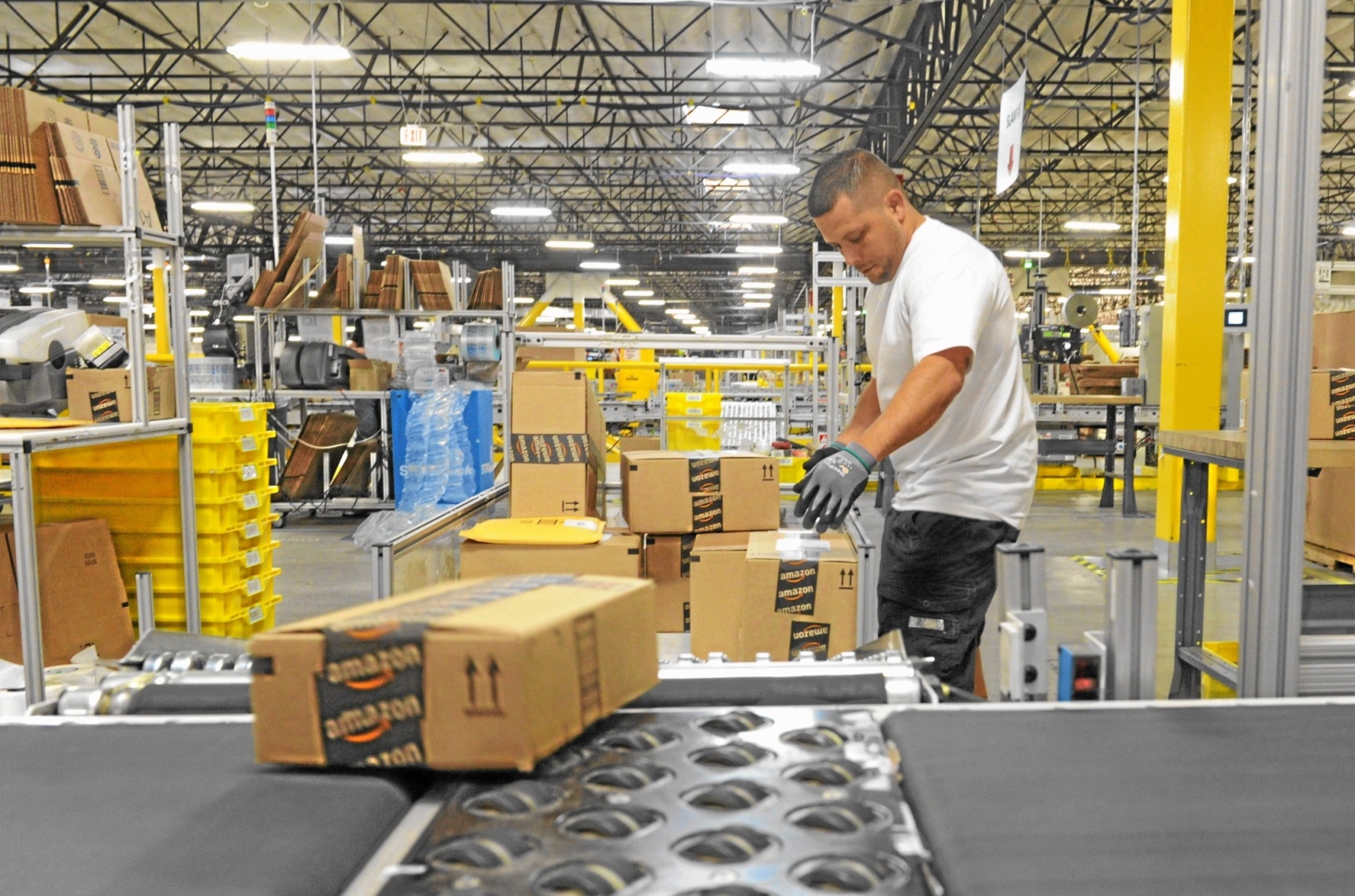Bill aims to improve work conditions for California warehouse employees

A bill that aims to protect California warehouse workers from claims of abusive quota systems has landed on the governor’s desk.
Assembly Bill 701, which recently gained approval in the Assembly and Senate, was authored by Assemblywomen Lorena Gonzalez, D-San Diego. If signed into law, it would be the nation’s first legislation to make companies disclose the productivity requirements and work-speed metrics they set for employees.
It would prohibit workers from being fired for failing to meet a quota that interfered with their ability to use the bathroom or take rest breaks, and it would bar employers from disciplining warehouse employees for being “off-task” when they are complying with health and safety laws.
Amazon in the cross-hairs
The measure doesn’t specifically name Amazon, but supporters and opponents of the bill say the Seattle-based e-commerce giant is clearly the prime target for the regulations.
“Amazon is pushing workers to risk their bodies for next-day delivery while they can’t so much as use the restroom without fearing retaliation,” Gonzalez said in a statement. “We can’t allow corporations to get rich off of the injuries of their workforce.”
Amazon representatives could not be reached for comment, despite repeated attempts.
In a February 2020 interview in The Guardian, an Amazon spokesman said, “Like most companies, we have performance expectations for every Amazonian and we measure actual performance against those expectations.”

Strong opposition
The California Retailers Association opposes AB 701, saying it impacts too many companies when the measure is clearly aimed at Amazon.
“If you cast this huge a net to go after one company there will be unintended consequences,” association President Rachel Michelin said. “We already have Cal/OSHA, which has the authority to enforce workplace safety. If the regulations need more teeth, let’s start there rather than creating a whole new set of laws.”
Michelin said the bill would impact distribution centers across multiple industries and would increase the cost of living for Californians, kill good-paying jobs and damage the region’s fragile supply chain.
Fifty organizations, ranging from retailers and food producers to auto-parts manufacturers and ethnic chambers of commerce, oppose AB 701. They are united via noonab701.org.
The rapid uptick in e-commerce buying has created a frantic pace at Southern California warehouses, a trend that has been exacerbated by pandemic-wary consumers who are reluctant to shop at brick-and-mortar stores.
The flow of consumer goods arriving from Asia through the ports of Los Angeles and Long Beach has also fueled warehouse growth — particularly in the Inland Empire. Last year, the two-county region completed 52 million square feet of real estate transactions, the most ever recorded, according to CBRE.
Data from Digital Commerce 360 show consumers spent $791.70 billion online with U.S. retailers in 2020, up 32.4% from $598.02 billion the prior year. E-commerce spending represented nearly 20% of total retail sales last year, compared with 15.8% in 2019.
A grim picture
A recent study conducted by the Ontario-based Warehouse Worker Resource Center and Human Impact Partners paints a grim picture of working conditions at Amazon warehouses.
“Workers reported that Amazon’s excessive quotas make it impossible to complete work and make rate safely,” the report said. “The majority of workers surveyed reported that they experienced a constant state of stress trying to keep up.”
One warehouse worker in the study claims that in order to “make rate,” or maintain Amazon’s expected pace of product movement, she’s required to scan a minimum of 200 items an hour, regardless of the size of the item.
If she stops scanning for more than six minutes — time that might be needed to pack and scan a larger item, for example — Amazon’s scanning device sounds an alarm indicating she has spent too much “time off task.”
When workers surpass Amazon’s time-off-task limit or fail to make rate, they allegedly face scrutiny, write-ups or termination, the report said.
A fact sheet that accompanies the report shows Amazon warehouse workers are allowed just six minutes of “time off task” a day, aside from their 30-minute lunch break. Employees say the closest restroom in the company’s massive warehouses is often more than six minutes away from their workstation.
“Amazon’s work rates dictate a dangerous pace of work that leads to injury,” the report said. “Research demonstrates that a fast pace of work is associated with a range of health impacts, including neck and shoulder pain, muscle or joint symptoms and back disorders.”
Sixty-seven percent of Amazon workers surveyed for the study reported developing injuries from their work at Amazon, and 75% said their required work rate is either “always” or “often” too high to work at a safe pace.
Gonzalez said AB 701 will empower workers to have a voice in their workplace, “even when their supervisor is an algorithm.”
Under AB 701, warehouse workers who believe a quota is unsafe are entitled to 90 days of their personal work-speed metrics and descriptions of quotas to better document violations.
If an employee is disciplined within 90 days of requesting the data or complaining to their employer or a state agency about an unsafe quota, AB 701 creates a presumption that the action was retaliatory.

